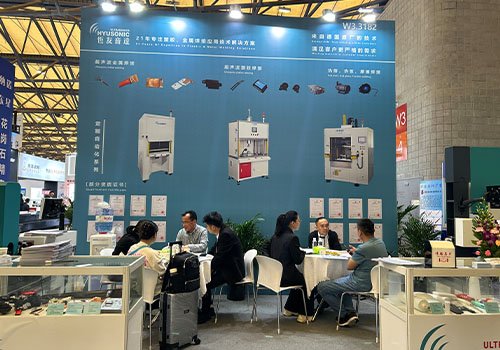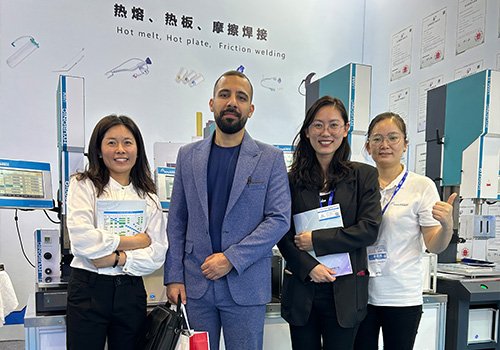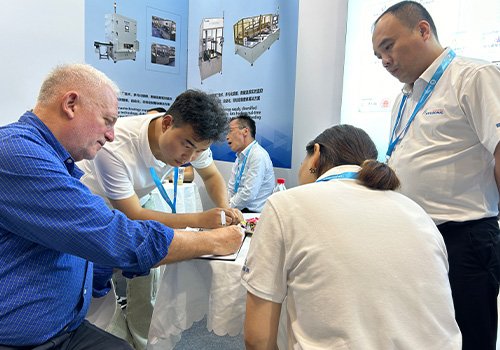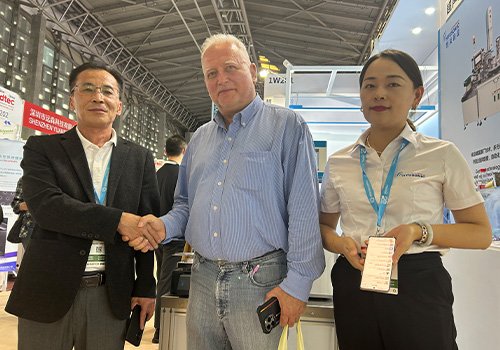Heat Staking Machine Manufacturer
Hyusonic is a leading heat staking machine manufacturer with 16+ years of industry expertise, specializing in high-precision plastic joining solutions. Our machines seamlessly integrate metal inserts (nuts, bolts, pins) into thermoplastics, delivering robust, burr-free connections ideal for mass production.
Heat Staking Machine & Equipment
Hyusonic’s heat staking machines are engineered for precise and reliable plastic-to-plastic or plastic-to-metal assembly. Unlike traditional thermal bonding, our systems use controlled temperature and pressure to form permanent joints without damage or residue. Whether you’re working with automotive dashboards, medical housings, or electronic modules, our heat staking machines deliver consistent performance and clean finishes.
Compared to ultrasonic welding, heat staking is ideal for applications where inserts, delicate circuits, or multi-layer materials are involved. Hyusonic supports custom tooling and modular integration into your automated line.
With certifications like CE and ISO, our plastic heat staking solutions are trusted by global manufacturers seeking energy-efficient and eco-friendly alternatives to traditional welding.
Heat staking is an intelligent thermal staking technology that goes beyond traditional heat-press methods. By integrating thermal conduction, ultrasonic pre-excitation, and laser positioning, the process enables precise deformation control of plastic staking features at sub-millimeter scale. This ensures secure, non-damaging mechanical fastening between plastics and materials such as metals or composites.

The hyusonic heat staking machine adopts an intelligent temperature control system (accuracy ±1℃) and servo motor drive. The riveting position deviation is ≤0.1mm, ensuring uniform molding of plastic pillars without flash. It features customizable automated multi – station synchronous heating, supports 24 – hour continuous operation, and improves efficiency by 300% compared to traditional manual riveting.
Heat staking with induction uses electromagnetic heating to locally melt plastic via metal inserts, enabling fast, precise, and clean joints ideal for automation. In contrast, conventional heat staking (hot plate or air) heats larger areas with less precision, making it more suitable for low-cost, less demanding plastic-to-plastic applications.
Our Value
Direct Factory, More Reliable
As a true manufacturer, we ensure higher quality control, fast response, and professional support. Unlike traders, we offer consistent service from production to after-sales, giving clients a more stable and dependable cooperation experience.
Top Components, Global Support
We use globally trusted parts like Siemens, SMC, and etc. This ensures high machine reliability and makes local replacements easy for international users—saving time and reducing maintenance effort.
Wide Range, Transparent Pricing
From entry-level to high-end models, our ultrasonic welders suit all needs and budgets. Clear classification and pricing let customers select the right configuration with confidence and no hidden costs.
Certified & Patent-Protected Tech
Our machines are CE, ISO-certified and backed by multiple patents. With strong R&D, we deliver safe, innovative, and performance-driven solutions for demanding industries worldwide.
Why Choose a Professional Heat Staking Machine Manufacturer?
1.Quality Certification
Working with a certified heat-staking machine manufacturer ensures product quality, process reliability, and long-term support. Hyusonic is ISO 9001 certified and CE compliant, demonstrating our commitment to international manufacturing standards and safety.
2.One-Stop In-House Development
Unlike general equipment providers, we offer full engineering support—from fixture design to system integration—ensuring stable performance and seamless automation compatibility. With over 16 years of industry experience, we help clients reduce cycle time, improve weld quality, and optimize their plastic assembly processes.
3.Professional Technical Support
Choose a manufacturer who not only delivers machines but also delivers trust, service, and technical excellence.
Your satisfaction is our goal
Professional Heat Staking Equipment Manufacturer
What Our Clients Say
Customer FAQs
What is the difference between ultrasonic welding and heat staking?
Ultrasonic welding uses high-frequency vibrations to generate heat, fusing materials (plastic/metal) by molecular agitation, ideal for precise, rapid joins in electronics. Heat staking heats a tool to melt plastic, forming a boss or stud to fasten components, suitable for structural assembly in automotive/household products, relying on thermal conduction for bonding.
What is the process of heat stacking?
Heat staking process: 1. Preheat a metal tool tip to specific temperature. 2. Position the tool over plastic components with bosses/studs. 3. Press the tool to melt the plastic tip via thermal conduction. 4. Shape the melted plastic into a head (e.g., mushroom form) by applying pressure. 5. Cool the area to cure the joint, fastening components together. Ideal for permanent plastic assembly in automotive/electronics.
What temperature is heat staking?
Heat staking temperature varies by plastic material: – ABS: 200–250°C (392–482°F) – Polycarbonate (PC): 250–300°C (482–572°F) – Polypropylene (PP): 160–200°C (320–392°F) – Nylon: 220–280°C (428–536°F). Factors like material thickness and tool design also influence optimal temperature, which must balance melting efficiency with avoiding material degradation.
What materials are heat staking?
- Thermoplastics (melted to form the joint).
- Metals/other components (e.g., PCB, busbars) that are fastened via the melted plastic.
So, the materials being heat-staked are thermoplastics, but the process often joins them to metal or other parts.
What is hot staking?
Hot staking (also known as heat staking) is a thermal joining process used to permanently fasten components, typically metal parts (e.g., PCBs, busbars, electrical contacts) to thermoplastic materials. The process relies on heating a tool (often a metal tip) to a specific temperature, then applying it to plastic bosses or studs on the workpiece. The heat melts the thermoplastic, which is then shaped (e.g., into a mushroom head) under pressure to secure the adjacent component. Once cooled, the solidified plastic forms a strong mechanical joint.









